Click.
My month-long journey through Laos flicked from plains to plateaus, between forests and farmlands, from karst mountainscapes to coffee plantations. It offered me a view of everyday life – a blend of minority hill tribes, ancient Khmer temples, Buddhist culture and remnants of French colonialism. Like the seven-frame reel of my childhood View-Master stereoscope, I clicked through seven places from south to north by scooter, overnight bus and private minivan. Click.
Slide 1 – Si Phan Don
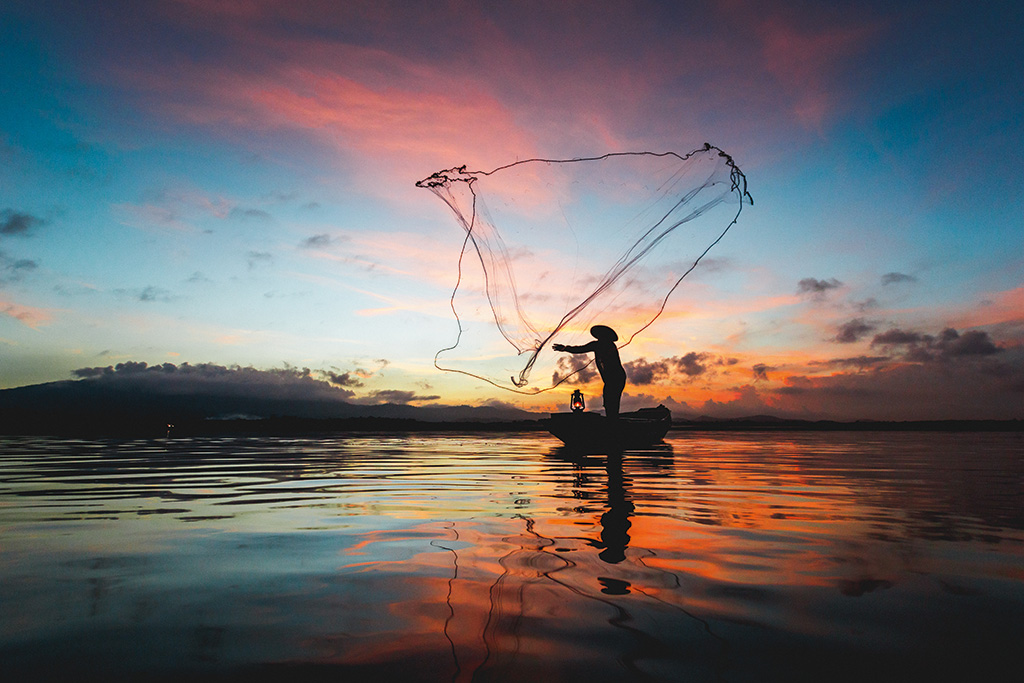
Although Laos is landlocked, the Si Phan Don riverine archipelago offers an alternative to Southeast Asia’s traditional beach and island escapes. Image credit: Getty Images/Gallo Images
This riverine archipelago within the mighty Mekong River is in the far south-west of Laos, on the border of Cambodia. Its waters bring a dichotomy of harvests, opportunities, tourists, supplies and misfortunes, as the number of islands, islets and sand banks – about 4 000 – halve during the wet season. As sunrise appeared I watched saffron monks glide between Don Det, Don Khong and Don Som islands aboard motorised sampans. With each stop, their pot-bellied alms bowls were refilled with cooked rice, bottled water and juice cartons.
From my riverside bungalow, I could see children launch themselves from tree stumps into the water. Fathers showed sons how to cast nets and to empty reed-woven fishing baskets. Sunset brought with it daily cleansing and washing routines. I spent hours lazing in my hammock and then cycled off the guilt between islands. Along the way, I watched coconuts being picked, wallowed in the water beside buffaloes, crossed rapids on wooden bridges and tubed downstream towards Cambodia. During a full-day kayaking expedition, I saw Southeast Asia’s largest waterfall, the Khone Pha Pheng Falls, and watched an endangered Irrawaddy dolphin from our boat.
Slide 2 – The Pakse Loop
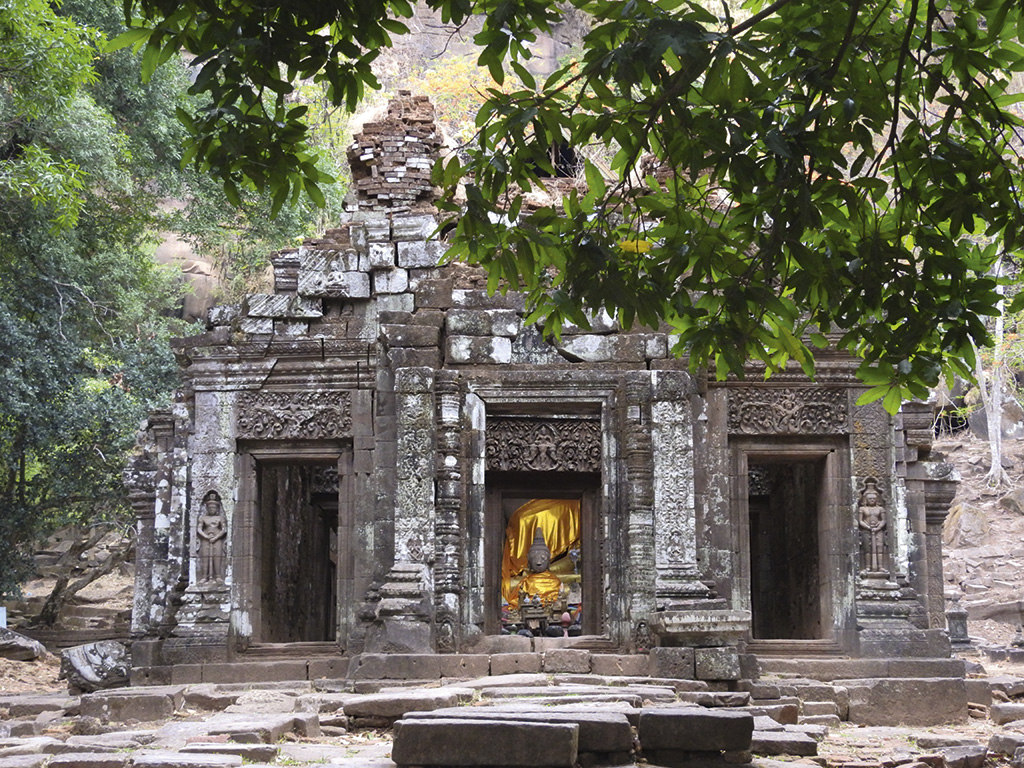
Vat Phu and its museum make for an interesting half-day trip from Pakse. Image credit:
Since learning how to ride a scooter a few weeks earlier, I planned to do the country’s famous motorcycle loops. I took to the road with a folded map in my pocket and warm khao nom kok (coconut cakes). The three-day Pakse Loop circumnavigates an ancient volcanic landscape through the highlands of the Bolaven Plateau in the southern Champasak Province. The main tarred route meanders through rural villages, farmlands and coffee plantations, crosses tributaries of the Mekong and passes numerous waterfalls that disappear into moist evergreen forest.
I stopped to admire the 120-metre-high Tad Fane twin waterfall, the tallest in Laos, in the Dong Hua Sao National Protected Area, which safeguards indigenous vegetation from ever-expanding coffee plantations and farmlands. While overnighting at Captain Hook’s rural homestay in Kok Phung Tai village, I gained a renewed appreciation for nature and herbal medicine.
Hook challenged my ingrained worldview as he told of his animistic beliefs and the ways of the Katu tribe, where toddlers smoke tobacco and sugar-cane juice bongs, and girls are taken as second or third wives. I received another lesson in cultural immersion when he took me hunting for snakes, scorpions, frogs and insects. Champasak’s cultural landscape makes for a half-day stop at the start or end of the loop. I climbed the crumbling stairs at Vat Phou temple complex, with Phou Kao Mountain behind me and the ruins of two ancient cities spilling into the Mekong River in front of me. This World Heritage Site was constructed between the fifth and 15th centuries as a Hindu homage to the relationship between humans and nature, and is associated with the Khmer Empire.
Slide 3 –The Thakhek Loop
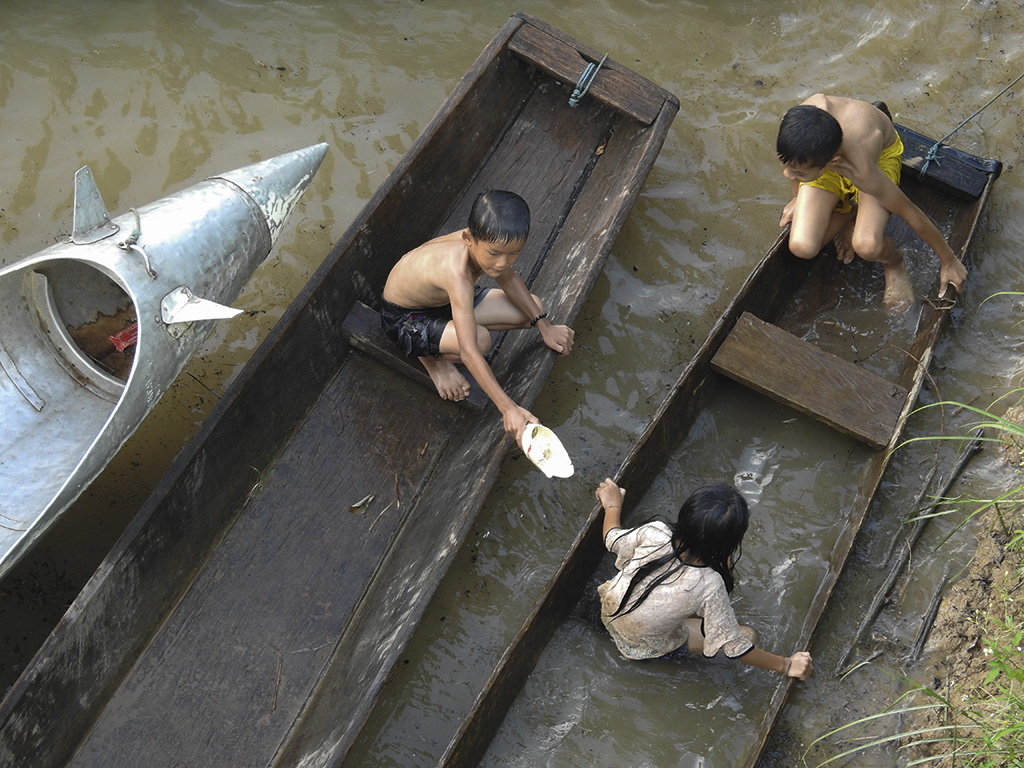
The river is a playground for local children, here on the Thakhek Loop. Image credit: Iga Motylska
This three-day, 450-kilometre route in Khammouane Province twists and turns through forested karst mountainscapes that are reminiscent of Vietnam’s Ha Long Bay – if it were located inland.
Pa Fa Cave with its 229 bronze Buddhist statues that date back some 500 years is a popular stop. I washed off the ochre dust that clung to me at Tha Falang (‘foreigner’s landing’) natural swimming hole – a different scene to the one I imagine French colonials enjoyed here. A green blur of rice paddies, buffaloes wading in mud pools and waving children zoomed past.
Lookout points and hiking trails served as stops along the curvaceous mountain slopes, and hundreds of dead trees stood to attention in the Nam Theun River. The penultimate stop, before closing the loop, is the country’s longest cave. I donned a headlamp to explore the 7,5-kilometre length of Kong Lor Cave. My voice echoed through the limestone chambers, some of which are 90 metres high, as I made my way along the underground Nam Hin Bun River in a sampan. I swam in the emerald-green spring-water pool at the mouth of the cave before setting out to complete the final stretch of the motorcycle loop.
Slide 4– Vang Vieng
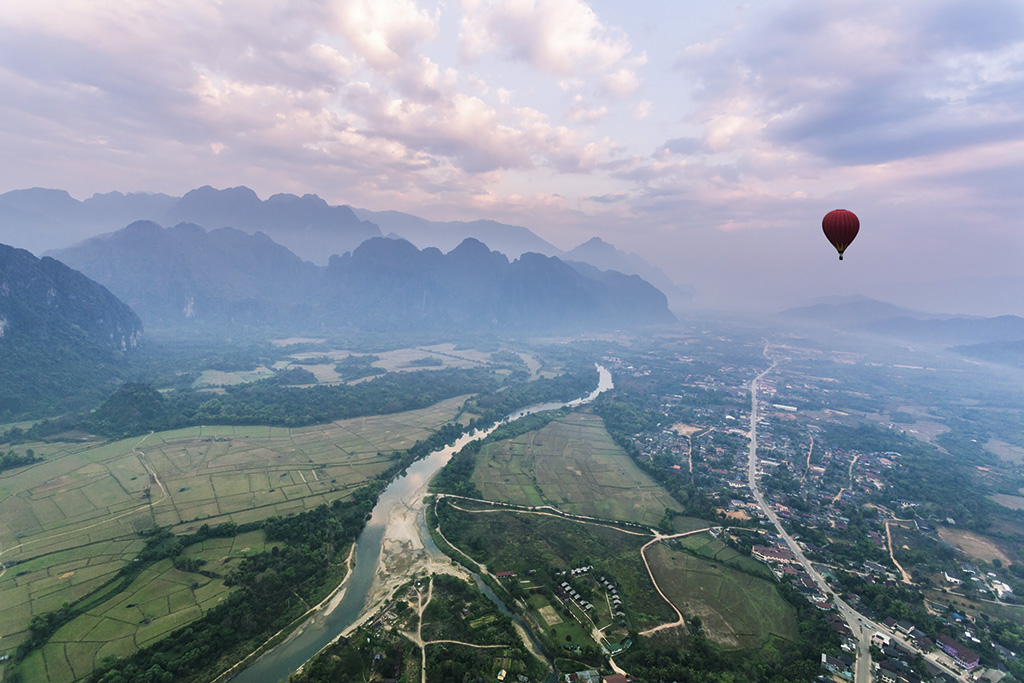
A sunrise flight over Vang Vieng’s rice paddies with Above Laos. Image credit: Iga Motylska
This town on the banks of the Nam Song River is about four hours north of the capital, Vientiane, and for many backpackers it’s party central – a floating version of the traditional pub crawl operates during the day and stops at bamboo restaurants and bars on stilts along the river.
Vang Vieng is also a hotspot for river tubing and adventure junkies can zip line, rock climb, explore caves or go off-road on buggies and motorbikes along gravel roads between Vang Vieng’s five turquoise spring-water lagoons. I hiked to Pha Hon Kham’s 360-degree viewing platform at sunset and took to the skies for a sunrise hot-air balloon ride.
Slide 5 – Phonsavan’s Plain of Jars
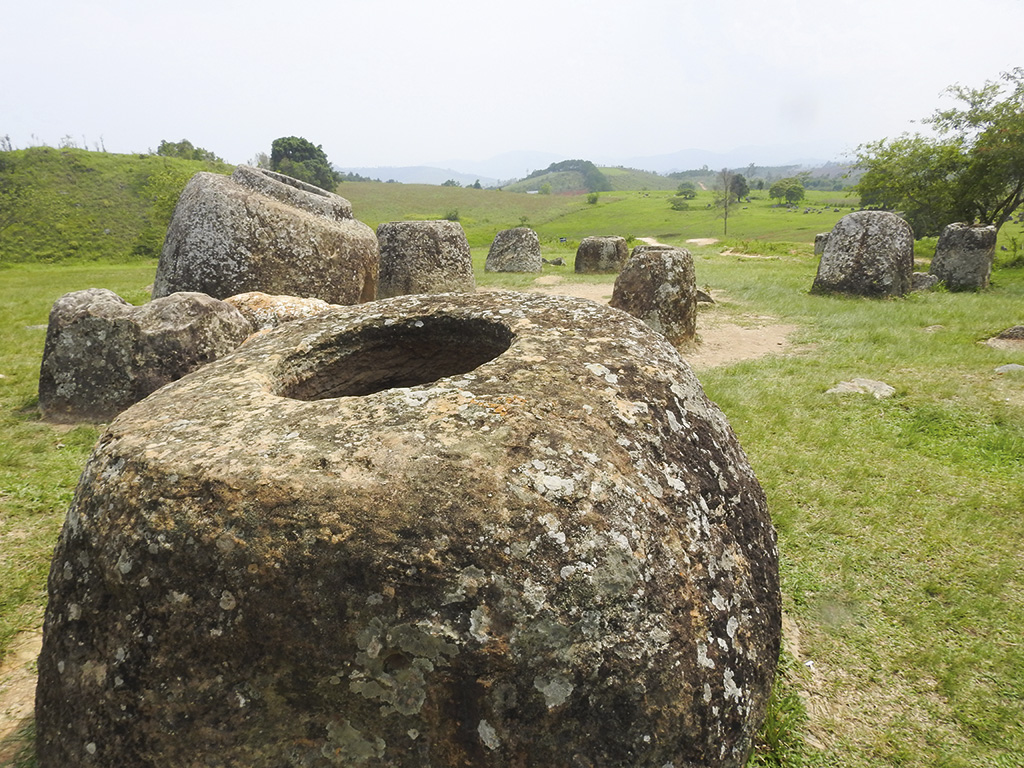
The Plain of Jars is Laos’s third World Heritage Site, designated in July this year. Image credit: Iga Motylska
It was a surreal experience walking among more than 2 ,000 megalithic stone vessels that are littered across 15 sites in the grassy Xiangkhouang highlands. Known as the Plain of Jars, it dates from the Iron Age and was recently designated as a World Heritage Site. The locals regaled me with an age-old legend about how these giant jars, some much taller than me, were believed to be Lao-Lao whisky cups that were carved from stone on the instruction of King Khun Cheung in celebration of his victories.
Research by French archaeologist Madeleine Colani and others in the 1930s suggest they were sepulchres. Human remains and possessions – glass beads, copper bracelets, pottery fragments and knives – were found in and around them and they originally had lids. More recent history has left the plains pockmarked by bomb craters. To date, Laos remains the most heavily bombed country per capita. During the Secret War (1964–1973), the US dropped more than two million tons of ordnance in support of the Royal Lao Government against the communist Pathet Lao. Decades later, demining efforts are still ongoing.
Slide 6 – Luang Prabang
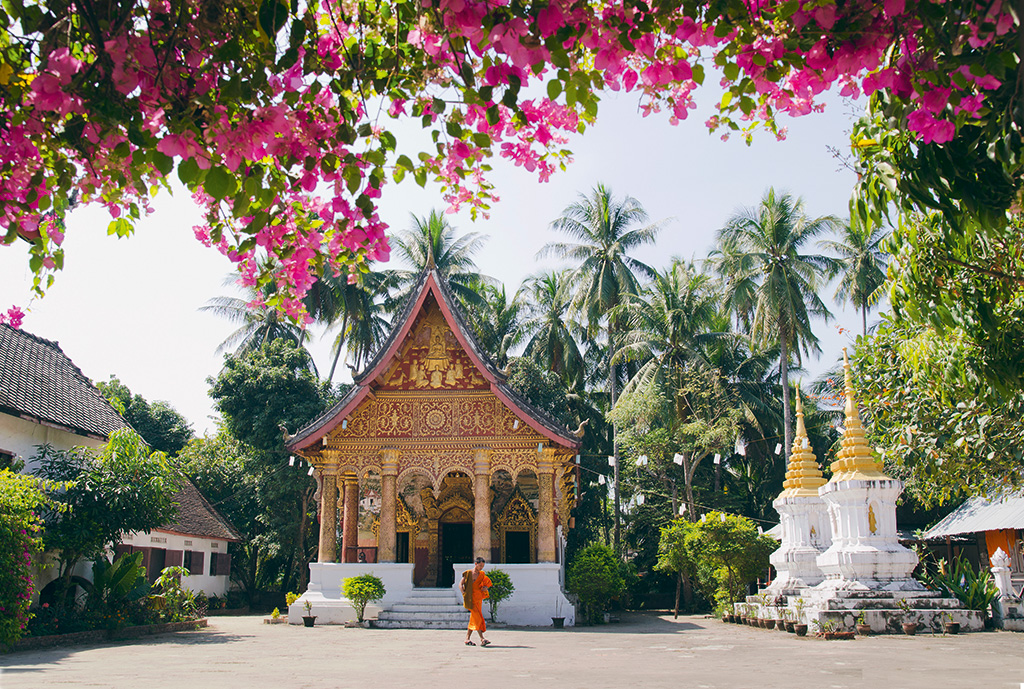
Wat Papai temple in the former royal capital of Luang Prabang. Image credit: Iga Motylska
The former royal capital intrigued me the most, and it was here that I spent the longest amount of time. Locals proclaim that Buddha, who rested here on his travels, foretold the rise of the city. It’s listed as a Unesco World Heritage Centre due to the centuries-old fusion of culture, tradition and architecture between traditional Lao wooden structures and colonial brick buildings.
The main street in the Old Quarter is lined with cafes, restaurants, boutiques, souvenir shops, travel agencies and NGOs in colonial buildings, and after dusk the street becomes a night market. Luang Prabang is the country’s Buddhist heartland. I spent a full day exploring a few of the town’s 34 pagodas that are ornately decorated with vivid mosaics, golden murals, engravings and sculptures. I stood alongside Buddhist statues as I watched the sunset from sacred Mount Phou Si, which overlooks the town.
Although the daily almsgiving ceremony that takes place in the Old Quarter has become commercialised, it still provides insight into Budd- hism – the daily practice to earn merit, silent meditation and fostering the spiritual connection between monk and Buddhist layman. My days were filled with trips to Kuang Si Falls, a noodle-making lesson on Laut Lee’s rice farm and a visit to the Laos Buffalo Dairy, where I indulged in lemon-grass-flavoured buffalo-milk ice cream.

As a Buddhist country, Laos is filled with golden figures. Image credit: Iga Motylska
Slide 7 – Nong Khiaw
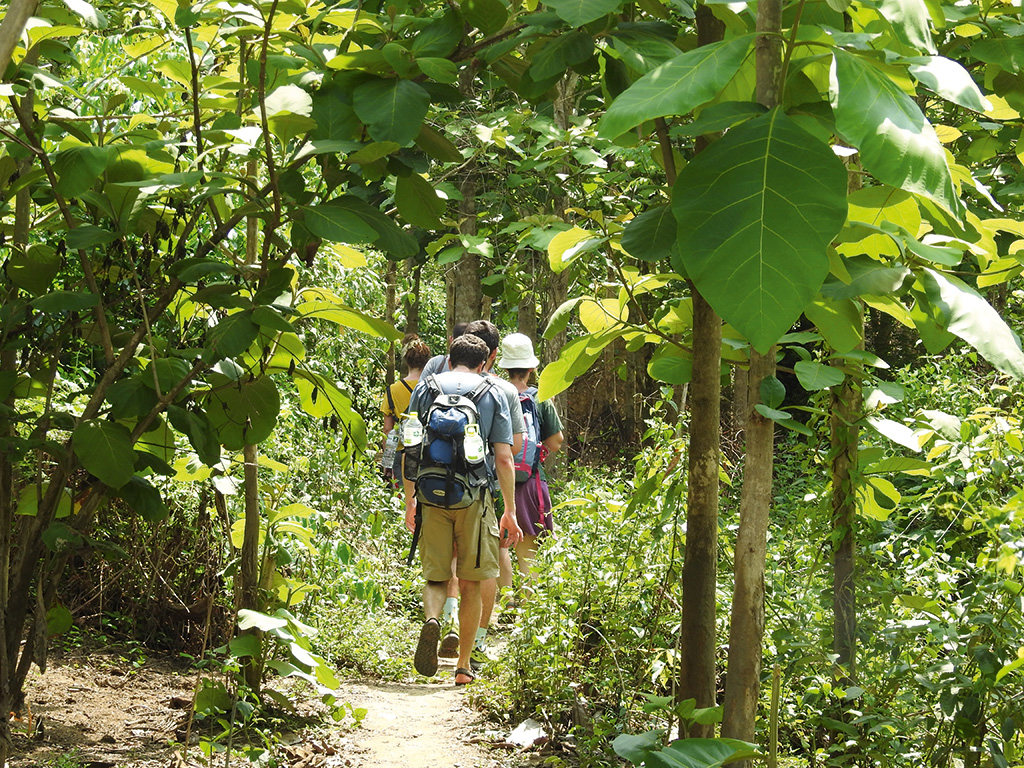
The 100 Waterfalls Trek can be booked through any tour agency in Nong Khiaw, or you can go independently by getting the info at the boat pier near the main bridge. Image credit: Iga Motylska
A two-day excursion to Nong Khiaw, where I did two hikes, left me with aching muscles. The first began with a long-tail boat ride upstream where I met the tour guide from the Lao-Khmu community of Don Khoun. He led the way along the 10-kilometre 100 Waterfalls Trek, up sandstone rocks and through water, where we had to look out for leeches.
At Pha Daeng Peak viewpoint, the highlight of our second hike, I watched the village settle down for the night in the elbow bend of the Nam Ou River, as yellow kayaks drifted off into liquid gold and the jungle soundtrack grew louder. From this height, I was able to reflect on the importance of sustainable tourism initiatives – especially in developing countries such as Laos – that simultaneously protect the environment and are driven by locals.
Villagers understand the symbiotic relationship between themselves and nature, as well as the opportunity to earn a living from their land. Laos enthralled me like few other countries have, and so I left with only a few hours to spare on my 30-day visa. The families I stayed with offered me authentic cultural exchanges rather than merely a place to rest my head, and I immersed myself in a wholly different reality. It was here that I observed myself and nature up close. Many guides and people I met didn’t speak English so I learnt some Lao to get by. But I also realised that little needs to be said when you’re standing on the edge of a waterfall staring into the jungle, ringed by mountains as far as the eye can see.
Plan your trip

Getting There
There are no direct flights to Laos from SA, but regional services, Lao Airlines and Bangkok Airways fly from central Asian hubs. Bangkok to Vientiane on Bangkok Airways costs from R3,250. bangkokair.com
Need To Know
Laos is more affordable than its neighbours and I was mostly charged the same price as locals, rather than inflated prices that include a so-called tourist tax – a common occurrence when travelling in Southeast Asia.
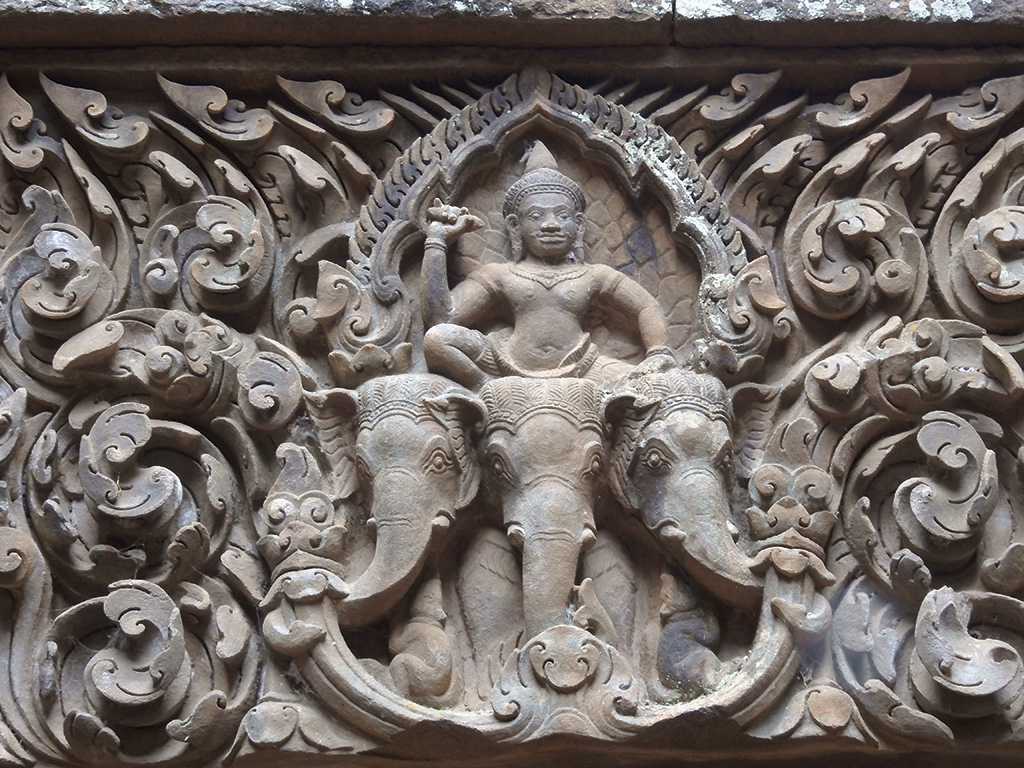
Detail of Vat Phu temple complex, associated with the Khmer Empire. Image credit: Iga Motylska
Stay Here
Si Phan Don Don Det Bungalows and Restaurant is on the sunrise side of Don Det island on the Mekong River. From R100 per person sharing. [email protected].
Pakse Loop Do a homestay with Hook and his family. Don’t expect hot water and anything beyond the basics – this experience will give you a true sense of how locals live. Hook’s daily tour (R25) covers his organic coffee plantation and everyday life in the village. The stay costs R83 per person and includes meals. +856-9893-0406 (WhatsApp) or find it on Facebook (Hook Laos).
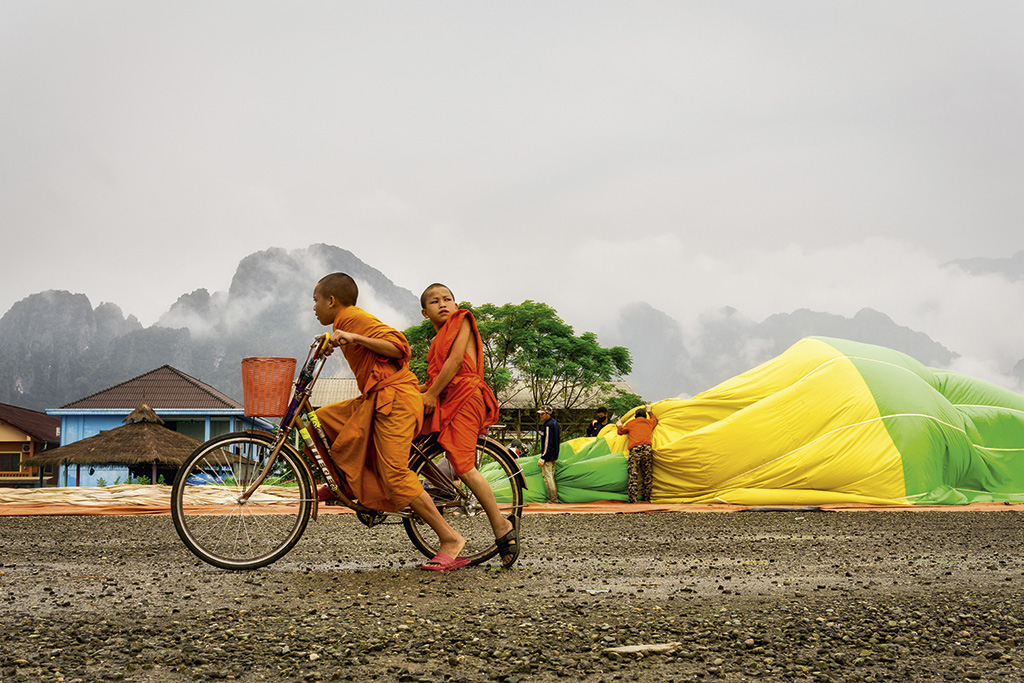
Young monks visit a hot-air balloon launch site in Vang Vieng. Image credit: Iga Motylska
Thakhek Loop Thongdam Guesthouse is located among rice paddies with mountain views and a short distance from Kong Lor Cave. From R60 pp sharing. booking.com
Vang Vieng The two-star Champalao Bungalows are located across a wooden bridge from the reception area, and the restaurant has possibly the best frozen mochachino in town. R384 per person sharing. agoda.com
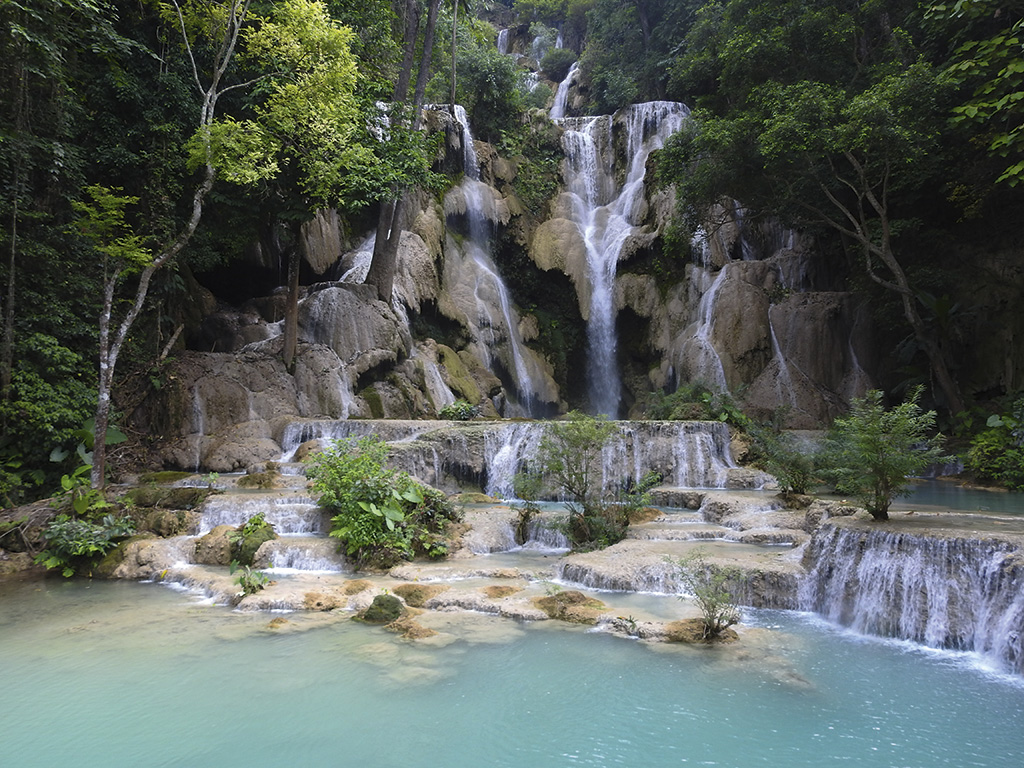
Kuang Si Falls cascades into three-tiered limestone pools surrounded by jungle. Image credit: Iga Motylska
Phonsavan Sabaidee Guesthouse is a newly renovated, family-run establishment centrally located. R50 per person sharing. trivago.com
Luang Prabang Time Out Guesthouse is a rustic establishment close to the night market and key attractions in the town. From R373 per person sharing (with air con). booking.com
Nong Khiaw The riverside Arthith Guesthouse offers views from the terrace of mountains and sampans gliding past. From R135 per person sharing. booking.com
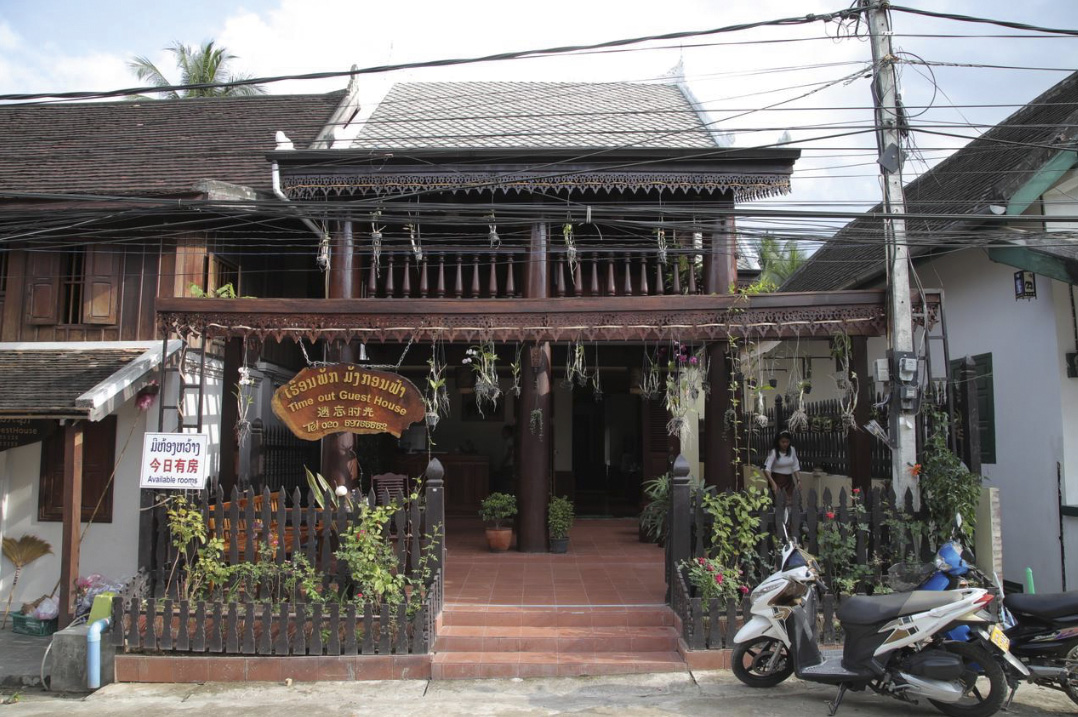
Time Out Guesthouse Image credit: Iga Motylska
Cuisine
Laos’ traditional meal, a meat salad called laap, is found on most menus. It’s made with beef, duck, pork or fish. The recipe includes mint, coriander and green onions with a dash of lime juice and fish sauce. It’s served with sticky rice that’s prepared in a thip khao (rice basket made from reeds). Common Southeast Asian dishes are also widespread, from green mango salad to khao soi soup, curries and noodle dishes. More unusual items include grilled chicken hearts, frog sosaties, buffalo sausages and Mekong seaweed. Expect to pay from R25 for a main meal, R9 for a small bottle of water, R35 for a gourmet smoothie. Many tourist hotspots offer free filtered water refills. Look for maps and apps detailing the nearest water outlet.
Words and photos: Iga Motylska
You may also like
Related Posts
There’s a sublime stretch of coast between the Overberg and main Garden Route mostly bypassed...
read more
The air is thinner at 2 590 metres, not quite elastic enough to contain sound so...
read more
Driving over the Berg River on Carinus Bridge, you’d probably dismiss Velddrif as just another...
read more